Text
Raza masterclass as Zimbabwe smash Dutch in World Cup qualifier | Cricket News

The Zimbabwe national cricket team has made history by defeating the Netherlands in the World Cup qualifier match. This is the first time Zimbabwe has won a World Cup qualifier match since the tournament began in 2007.
The match was a masterclass performance by Zimbabwe's captain, Hamilton Masakadza, who scored an unbeaten century to lead his team to victory. Masakadza's innings of 101 not out was the highest score of the match and helped Zimbabwe to a total of 287/7.
The Netherlands were unable to match Zimbabwe's total, and were bowled out for just 181 runs. Zimbabwe's bowlers were led by Blessing Muzarabani, who took four wickets for just 28 runs.
The victory was a huge boost for Zimbabwe, who had been struggling in the tournament prior to this match. The win also puts Zimbabwe in a strong position to qualify for the World Cup, as they now have a strong chance of finishing in the top two of their group.
The performance of Masakadza was praised by many, including Zimbabwe's coach, Makhaya Ntini, who said that Masakadza's innings was "a masterclass in batting".
The victory was a huge moment for Zimbabwe cricket, and a reminder of the potential of the team. With the World Cup just around the corner, Zimbabwe will be hoping to continue their good form and qualify for the tournament.
https://m.timesofindia.com/sports/cricket/icc-world-cup/raza-masterclass-as-zimbabwe-smash-dutch-in-world-cup-qualifier/amp_articleshow/101140824.cms
Read the full article
0 notes
Text
England cricketer Sophie Ecclestone joins grassroots cricket session in Nottingham

England cricketer Sophie Ecclestone recently joined a grassroots cricket session in Nottingham. The session was organised by the England and Wales Cricket Board (ECB) and was attended by over 100 children from local schools.
Ecclestone, who is currently the number one ranked bowler in the world, was joined by other England players such as Heather Knight, Anya Shrubsole and Tammy Beaumont. The session was designed to inspire the next generation of cricketers and to encourage more young people to take up the sport.
The session was a great success, with the children taking part in a range of activities such as batting, bowling and fielding drills. Ecclestone was on hand to offer advice and support to the children, and she was also able to share her own experiences of playing cricket at the highest level.
The ECB is committed to increasing participation in cricket at all levels, and this session was a great example of how the organisation is working to achieve this. It is hoped that the session will have a lasting impact on the children who attended, and that it will encourage more young people to take up the sport.
https://www.cricketworld.com/england-cricketer-sophie-ecclestone-joins-grassroots-cricket-session-in-nottingham/87794.htm
Read the full article
0 notes
Text
ICC panel debates cap on foreign players in T20 leagues
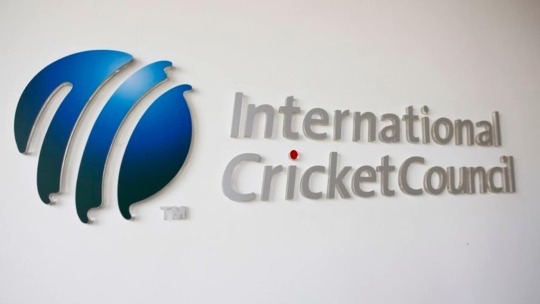
The expansion of franchise T20 leagues, which threatens to lure top talent away from international cricket, was extensively discussed by the ICC working group during the WTC final.
The growing prominence of franchise cricket sparked intense debate during the World Test Championship final at the Oval last week. The International Cricket Council's (ICC) working group deliberated on two significant proposals: reducing the number of overseas players allowed in franchise leagues (such as IPL) to four in the playing eleven and requiring teams to pay a 10% release fee to the player's member board (similar to IPL franchises).
While the matter will be taken up at the ICC chief executives committee meeting in South Africa next month, influential members of the panel have dismissed the possibility of any immediate drastic changes to the current system.
The International League T20, held in the UAE, would be most affected if such changes were implemented. It currently permits nine overseas players in the playing eleven, offers the highest salaries after IPL (with the highest-priced player earning $450,000 per season), and claims to attract the second-highest viewership after IPL. The upcoming Major League Cricket, commencing on July 13 in the US, allows a maximum of six overseas players. The Caribbean Premier League, established in 2013, allows teams to field five overseas players.
The main objective of the ICC working group's discussion on these proposals was to curb the migration of top players from international cricket to franchise cricket. The decisions of Trent Boult and Jason Roy to decline national contracts, as well as Quinton de Kock's early retirement from Test cricket (all three will participate in MLC), have raised concerns. Cricket West Indies has also witnessed a significant exodus of top T20 players to franchise leagues.
However, the leagues are unhappy with these plans. One league executive, who preferred to remain anonymous, stated, "It's nothing but interference in the independent functioning of a league. Such proposals have been rejected in the past. No one is here to protect Test cricket as it is being portrayed."
League officials argue that ILT20 and MLC provide a platform for cricketers from associate nations to showcase their talent, whereas IPL can only occasionally serve as a launching pad for players like Joshua Little, the 23-year-old left-arm pacer from Ireland who represents the Gujarat Titans.
With three competing leagues—ILT20, SA20, and BBL—crammed into the January-February window, allegations and counter-allegations have emerged. A senior executive from a league with a strong domestic talent pool referred to the T20 competitions in the UAE and the US as "a feeble attempt to run a parallel global event."
Although not directly affected, the BCCI is closely monitoring the situation. Indian cricketers are not allowed to participate in non-IPL leagues, and there are no plans to increase the number of overseas players in the IPL. However, IPL franchises have shown interest in the new T20 leagues. Teams like Mumbai Indians, Chennai Super Kings, Kolkata Knight Riders, Delhi Capitals, Rajasthan Royals, Punjab Kings, and Sunrisers Hyderabad own franchises in leagues other than IPL.
Some owners of multiple teams have reached out to overseas players, proposing year-long contracts. There are even rumors of a potential new league starting in Saudi Arabia.
Resistance to these restrictions is expected at the ICC CEC meeting, similar to the discussions within the working group. Mubashir Usmani, the general secretary of the Emirates Cricket Board, which oversees ILT20, serves as an Associate representative on the ICC committee. KKR, MI, and DC also have teams in ILT20 and MLC. The CEO of one board suggested, "At most, there could be an attempt to impose stricter regulations on future T20 leagues."
The introduction of a 10% player release fee is also viewed as unlikely since franchises affiliated with member boards that run leagues would resist such a move. Many of these leagues are still in their early stages and do not generate profits comparable to the IPL.
Source:Hindustan Times
Read the full article
0 notes
Text
Cricket just isn't like it used to be...
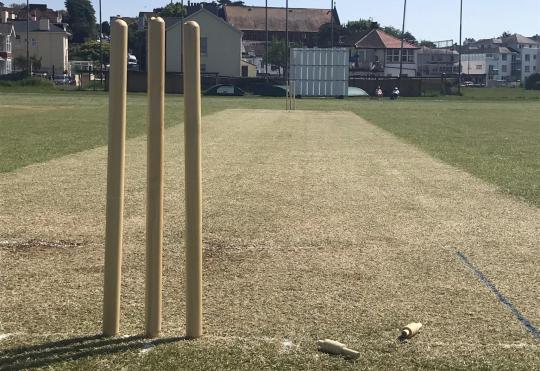
In this column just one year ago, Nigel Mountford, the CEO of Devon CCC, witnessed the resumption of the game after a two-year pause caused by Covid restrictions. He had a feeling that something had shifted.
During an interview with Torbay Weekly, Mountford expressed concerns about cricket, as it requires more time than most other sports, which presents significant challenges.
While it might have been an ongoing trend, the two years spent at home had hastened the reevaluation of many individuals' lives.
Not only had family and work obligations climbed higher on the priority list, but another substantial factor emerged, which we can refer to as 'lifestyle.'
Gone are the days when cricketers dedicated themselves to months of availability in the summer. At the same time, footballers and rugby players did the same during the winter, interrupted only by injuries, family losses, and, perhaps, a birth in the family.
If you were considered a 'true' player, you wouldn't even consider getting married during the 'inopportune' time of the year. Wives, partners, and girlfriends went along with it all, and entire families revolved around the clubs. Many away matches turned into enjoyable outings or trips to the beach.
Nowadays, a glance through the weekly preview columns reveals the undeniable changes, just as Mountford had predicted.
Players frequently find themselves unavailable due to birthdays, bachelor parties, holidays, work commitments, 'paternity leave,' or the occasional music festival. It may be frustrating for some, but it's the reality, and dwelling on it won't bring any benefit.
This is the face of 'modern' life, greatly influenced by social media. And it won't suddenly halt its continuous transformation or turn backward. That's why T20 cricket has become the preferred format for many, both as participants and spectators. Of course, fighting for certain traditional values is important because they still hold worth and relevance.
A five or six-hour cricket match without a tea break in the middle is a lesser experience. Nevertheless, as always, it's a matter of adaptability or decline.
Sport
Jim Parker
Torbay Weekly Newsletter
Subscribe to our newsletter to stay updated with the latest news in your inbox.
Your email address
Your email address
Subscribe
YOU MIGHT ALSO LIKE
Brixham Gig Club excels among competitors at 'masters' regatta
Public
By Hilary Bastone, The 'masters' regatta hosted by Lyme Regis Gig Club received high praise and was described as a 'celebration of rowing' by some participants. The event, which took place on Sunday, May 21, featured 16 visiting teams and 19 boats competing. The favorable weather conditions allowed.
Torbay Weekly
6 Jun 2023
News
Torquay cyclist Harrison Wood inches closer to fulfilling Tour de France dream
Public
Being selected to participate in the Tour de France is the ultimate aspiration for any cyclist. Torquay's young professional, Harrison Wood, has significantly improved their chances of receiving this honor. The 22-year-old, a former Torquay Boys' Grammar School student, is now on the brink of realizing his dream to ride.
Source:
Read the full article
0 notes
Text
How cricket helped Windrush arrivals build a sense of 'home' in Britain
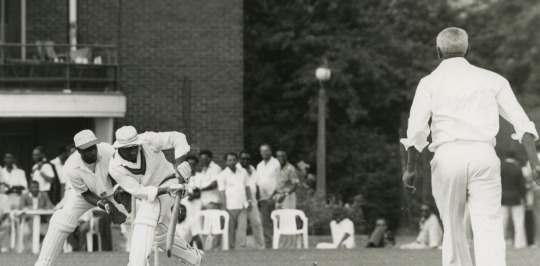
When it comes to crafting content, three essential factors come into play: "perplexity," "burstiness," and "predictability." Perplexity measures the intricacy of the text, while burstiness compares the variation in sentence structures. On the other hand, predictability gauges the likelihood of guessing the subsequent sentence. Human writing tends to exhibit greater burstiness, featuring a mix of longer and more complex sentences alongside shorter ones. In contrast, AI-generated sentences tend to be more uniform. For the content I am about to request, it's crucial to maintain a good level of perplexity and burstiness while minimizing predictability. Additionally, please ensure that the content is written in English only. Now, let's proceed with the rewrite:
During the 1950s, cricket was extensively played throughout Britain, spanning towns, villages, and cities. It was not just limited to workplaces but also thrived as a social activity. This sport had become ingrained in the English-speaking Caribbean, establishing itself as a ubiquitous cultural pastime.
Cricket played a significant role in Britain's cultural imperialism, acting as a vehicle for conveying notions of social order. In the colonial Caribbean, cricket clubs were segregated based on class and "race." The emphasis on upholding rules, promoting "fair play," and exhibiting sportsmanship all contributed to the perpetuation of white English prestige.
Following the Second World War, the influx of black Caribbean men on the Windrush ship faced rampant racism, which compelled them to establish their cricket clubs. One such club, the Carnegie CC, was founded in 1955 to cater to Caribbean cricketers in and around the Brixton area and remains active to this day.
This article is part of our Windrush 75 series, commemorating the 75th anniversary of the HMT Empire Windrush's arrival in Britain. The stories in this series delve into the history and impact of the hundreds of passengers who disembarked to aid in the post-war rebuilding efforts.
For the Windrush generation, cricket held immense significance, as I elaborate in my upcoming book, "Windrush Cricket: Caribbean Migration and The Remaking of Post-War England." Renowned Trinidadian writer C.L.R. James, in his 1963 memoir "Beyond a Boundary," spoke of cricket's profound influence:
"Not only in social attitudes but in our most intimate personal lives, there is a whole generation of us, perhaps two generations, who have been shaped by it. More so than anywhere else."
Despite pervasive racism, certain Caribbean cricket figures received recognition and eventually gained favor with the political establishment. Learie Constantine, for instance, became the first black person to sit in the House of Lords in 1969.
Prominent cricketers like Bertie Clarke, who had played for the West Indies before the war, played integral roles in the glamorous social circles of cricket at the BBC. Collaborating with Una Marson, the radio host, the BBC's first black female employee, and other newcomers from the Caribbean, he worked on the London Calling radio program.
By the late 1960s and 1970s, a thriving ecosystem of Caribbean cricket emerged across Britain. Black cricket clubs proliferated in English cities, beginning with Leeds Caribbean, established in 1948, and quickly followed by others such as Sheffield Caribbeans, Bristol West Indians, and the West Indian Cricket and Sports Club in Manchester.
These clubs and the associated competitions were established by black individuals themselves, acting as vital bridges between England and their Caribbean homelands. Cricket played a crucial role in the cultural exchange within the Black Atlantic.
London Transport and cricket were closely intertwined. As a major employer in post-war London, London Transport emphasized sports and recreational facilities in its recruitment materials. Pamphlets distributed in Barbados informed potential applicants that, in addition to their regular jobs on buses and the London Underground, migrant workers would have ample opportunities to play cricket in the capital. By the late 1950s, London Transport had become a significant catalyst for developing Caribbean cricket in England.
Some of the arrivals initially saw themselves as temporary visitors but later returned to the Caribbean to play cricket as representatives of London. One notable example is the highly successful Central Road Services (CRS) team, named after a bus garage in south London.
According to Chris Hope, a bus conductor recruited from Barbados:
"Cricket was a passion for most Barbadians, and the Central Road Services cricket team had three or four venues, including Langley Park and Osterley. It was how we spent our time... Caribbean islanders would gather, and seeing other black people was always a source of joy."
In 1975, the CRS team embarked on a cricket tour back to Barbados, exemplifying the migratory paths and returns that shaped this generation's multiple layers of identity and belonging. For many, the notion of home shifted depending on the context, and cricket provided a cultural and social bond between their two worlds.
Lorenzo Daniels, another bus conductor recruited from Barbados, recollected:
"I arrived here at a young age and settled down. This has become my life. This is my home. Barbados is where I was born."
Through self-organization and unwavering determination, some individuals, such as Devon Malcolm, Phillip DeFreitas, and David Lawrence, rose to represent the England national cricket team. However, their accomplishments often sparked racist backlashes, revealing deep fault lines that emerged as England grappled with its postcolonial identity.
Other Windrush cricket enthusiasts worked at the grassroots level, creating opportunities for young people and fostering spaces where black Caribbean individuals across different generations could interact. These initiatives paralleled and intersected with the church and social clubs, forming a crucial part of black British history that extended well beyond protests, policing, and "resistance." This remarkable generation of Windrush cricketers played a pioneering role in community building in England, ultimately reshaping the definition of Britishness.
Source:Theonversation
Read the full article
0 notes
Text
Black Caps lose another key figure for Cricket World Cup

reigning Men's ODI Player of the Year Set for Surgery, World Cup Dreams Shattered
Blow to Black Caps as Bracewell Faces Lengthy Rehabilitation Ahead of ICC ODI World Cup
Black Caps coach Gary Stead expressed his disappointment as the reigning Men's ODI Player of the Year, Michael Bracewell, prepares for surgery in the UK this Thursday. Bracewell's unfortunate injury setback will force him to miss the highly anticipated ICC ODI World Cup, scheduled to take place in India this October-November.
Bracewell's Absence of a Significant Loss
Gary Stead empathized with Bracewell, emphasizing the impact of the injury on the player and the team as a whole. He said, "Firstly, you always feel for the player when injury strikes, especially when it means they will have to miss a world event." Stead acknowledged Bracewell's outstanding contributions to the Black Caps over the past 15 months, recognizing him as a valuable team member.
A Multifaceted Player and a Crucial Asset
Michael Bracewell's exceptional skills, showcased across all aspects of the game, positioned him as a pivotal player for the Black Caps in the upcoming World Cup. His absence will undoubtedly be felt as the team now faces the challenge of finding a suitable replacement to fill the void left by the injury.
Embracing the Challenge of Rehabilitation
Although deeply disappointed, Bracewell adopts a pragmatic outlook, acknowledging the inevitable occurrence of injuries in the world of sports. Recognizing the significance of rehabilitation, he has shifted his focus towards recovering from the setback and reclaiming his place on the cricket field.
Black Caps Confront Another Setback
The absence of Michael Bracewell adds to the series of unfortunate events that have plagued the Black Caps' World Cup campaign. The team suffered a major setback in April when their captain and leading batsman, Kane Williamson, was ruled out of the tournament due to a ruptured ACL. Williamson sustained the injury during an awkward fall while playing in the IPL, requiring surgical intervention.
Bracewell's Return Delayed
Following his surgery, Bracewell, who has been away since April after being called to the IPL, will face additional waiting time before he can fly back home. The recovery process will necessitate a couple of weeks of post-surgery rehabilitation, further prolonging his absence from the team.
As the Black Caps regroup and strategize their campaign for the ICC ODI World Cup, they will undoubtedly miss the valuable contributions of Michael Bracewell. The team now faces the challenge of adjusting their lineup and finding alternative solutions to compensate for the absence of their esteemed player. On the other hand, Bracewell remains determined to recover swiftly and rejoin his teammates on the cricketing stage.
source:Biackcaps
Read the full article
0 notes
Text
Major match venues for 2025-31 announced

Glamorgan Cricket Announces Hosting of England Men's and Women's International Matches from 2025 to 2031.
Glamorgan Cricket is thrilled to reveal the venues hosting England Men's and England Women's International matches from 2025 to 2031. With 17 fixtures scheduled at Sophia Gardens, including highly anticipated encounters against India and Australia, it promises to be an exciting period for cricket fans.
Welcoming India and Australia in Bumper International Encounters
Sophia Gardens will witness the clash of titans as India and England face off in a thrilling One Day International in 2026. Additionally, 2028 will bring another exciting match with an IT20 contest between the two cricketing powerhouses. Furthermore, with the Ashes fervor currently gripping the nation, cricket enthusiasts can eagerly anticipate an intense IT20 showdown between England and their greatest rivals in 2028. As International Cricket returns to Cardiff for the foreseeable future, Glamorgan Cricket is excited to extend a warm Welsh welcome to every participating nation.
Accelerating the Growth of Women's Cricket
Recognizing the immense potential of the Women's game, Sophia Gardens will host a minimum of five Women's Internationals over the next seven years. Glamorgan Cricket aims to showcase the remarkable talent and offerings of the Women's game on a global stage by providing a platform for the rapid growth of Women's cricket across Wales and England.
Long-Term Allocations and Enhanced Facilities
As opposed to the previous five-year period, the recent announcement of seven-year allocations provides venues with increased certainty and encourages sustainable investment in infrastructure and facilities. Notably, this is the first time the allocation process has been used to determine both Men's and Women's International matches over the same duration.
Richard Gould, Chief Executive Officer of the England and Wales Cricket Board (ECB), expressed his excitement about the future clashes: "While this year's Men's and Women's Ashes are just days away, fans can already start looking forward to more thrilling encounters throughout the country in the years to come. By announcing long-term allocations for Women's international matches alongside Men's, we aim to further build upon the significant growth in attendance witnessed in recent years, with the Women's Ashes setting new records. This strategic move provides venues with long-term certainty, enabling sustainable investments in stadium improvements and elevated fan experiences."
Glamorgan's Delight and Enthusiasm
Hugh Morris, Chief Executive Officer of Glamorgan Cricket, conveyed his delight regarding the announcement: "Hosting International fixtures in Cardiff is always a joy, and we are thrilled to welcome some of the world's finest teams to Wales. The prospect of India and Australia returning to Sophia Gardens is truly remarkable, and we are incredibly excited to host England Women for a minimum of five fixtures during this period. The love and passion for the game will undoubtedly continue to flourish in Wales through these great fixtures, and we eagerly anticipate extending a warm 'Croeso' to all the visiting teams at Sophia Gardens over the next seven years."
As Glamorgan Cricket takes center stage, hosting a multitude of prestigious matches, fans from around the globe can look forward to witnessing exhilarating cricketing action in the years to come.
Source:Major match
Read the full article
0 notes
Text
Bazball unpacked: how England have turned up the dial in Test cricket | Ashes 2023
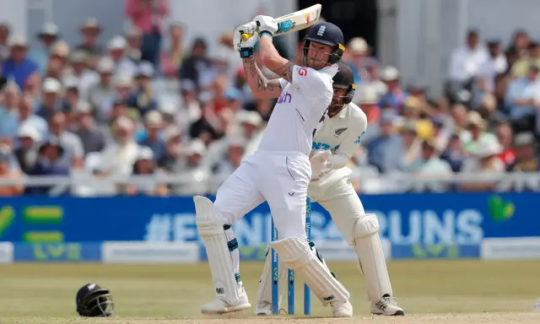
England's remarkable 74-run victory against Pakistan in Rawalpindi last December is one of their most memorable matches. In retrospect, we can speculate on England's strategic plan for the game. It likely involved acknowledging the flat pitch and the need to bowl at least 250 overs to dismiss Pakistan twice. Considering the shorter winter days, they anticipated around 400 overs in the match. England couldn't bat for more than 150 overs across both innings. Assuming Pakistan would score at their average run rate of 3.5 runs per over, they would end up with approximately 875 runs. Consequently, England set their target at 900 runs within 150 overs. The result? England scored a remarkable 921 runs in just 136.5 overs, at an impressive run-rate of 6.73, and bowled Pakistan out for 579 and 268 in a total of 252 overs. England secured the victory with about 20 minutes of daylight remaining. This approach perfectly exemplifies the Bazball philosophy, buying time for the bowlers, especially in Rawalpindi, where Australia's visit nine months prior had resulted in only 24 wickets and a soporific draw across three innings.
The England team's win over Pakistan in fading light at Rawalpindi perfectly encapsulates their Bazball approach. Photograph: Anjum Naveed/AP
How unique is England's batting approach? Apart from that particular match, only one other team has managed to score 500-plus runs in a Test match at a run rate of six or more per over, and that team is also England, in their match against Ireland at Lord's earlier this month. Since the leadership of Ben Stokes and Brendon McCullum, England's overall run rate has been an impressive 4.85 runs per over. When considering the best run rates achieved by Test cricket captains (considering Stokes' captaincy in the one-off Test match in 2020, which slightly lowers his average by 0.2), England's team stands significantly ahead of the rest.
Even Steve Waugh's dominant Australian team from the turn of the century, which aimed to score at four runs per over, couldn't quite achieve England's level of aggression. While McCullum himself ranks 10th overall in the table above, during his last 12 Tests as captain, New Zealand's run rate averaged 3.89 runs per over, placing him in second position. This transformation occurred after the third Test against Pakistan in Sharjah in 2014, coinciding with the tragic death of Australia's Phillip Hughes and profoundly impacted McCullum's mindset.
What are the implications of this rapid run rate? Throughout Test cricket, teams have traditionally batted for extended periods to accumulate enough runs to secure victory. In almost three-quarters of Test wins, the victors have batted for at least 140 overs. However, under the Bazball approach, England has won 11 out of 13 Tests, with only one instance where they required a significant amount of time in the middle – the 178.2 overs they batted against New Zealand at Trent Bridge last year. Their success rate in winning Test matches while facing fewer than 140 overs is unparalleled.
Does this strategy work in fourth-inning chases? So far, the results have been excellent. The Baseball era
began with England becoming the first team to chase 250 or more runs in four consecutive Tests successfully. It's no wonder Stokes has opted to bowl first whenever he has won the toss at home and consistently uses phrases like "we'll chase" during the toss. The only instance in this period where England was set a target between 250 and 400 was against New Zealand at Wellington, where they narrowly lost by one run, resulting in an 80% success rate in that range. From 1877 until the end of 2020, 549 targets between 250 and 400 were set in Test cricket, with only 10.92% (60 matches) won by the chasing team. Comparing this to the Bazball era reveals a stark contrast.
Are there any other notable aspects of their approach? Declaring the first innings in a Test match is a relatively rare occurrence and typically happens after a team has made a substantial score and batted for a long duration (such as 550 runs for six wickets in 170 overs). However, in his relatively short time as captain, Stokes has already declared England's first innings on four occasions, with the longest declaration after 106.4 overs. Regarding first innings declared before the 110-over mark, Stokes ranks second on the all-time list, achieving in far fewer Tests than his predecessors.
The batting approach of the entire England team has fully embraced the Bazball strategy. All six of their top-seven batters, who have played at least 10 Test innings before and during the Bazball era, have increased their strike rates under the current regime, with most experiencing significant improvements.
But what about the bowlers? Stokes has emphasized the importance of taking 20 wickets as quickly as possible, regardless of the runs conceded, and this objective has been consistently met. During this period, Jimmy Anderson and Stuart Broad, England's leading wicket-takers, claimed 45 wickets in the Baseball era (as has Jack Leach). Their performance provides ample data for analysis. When comparing their combined numbers under previous England captains to their performance under the more attacking Bazball approach, it becomes evident that they are taking wickets at a rate of one every 7.1 overs, even while conceding more runs per over than before. Notably, this represents a reduction of nearly two overs per wicket.
Was England the first to adopt this style of play? Not exactly. The presence of Clem Hill's Australian team might surprise some, but the period between 1890 and 1914 was rightfully termed the "golden age of cricket." Although exact ball-by-ball data is not always available, it is clear that quick scoring became a trend during this era. Victor Trumper, Australia's renowned batsman under Hill's captaincy, is estimated to have scored at a strike rate of 67.1 in Test cricket, placing him 12th among the fastest scorers in Tests, as calculated by Charles Davis. For reference, Viv Richards ranks 11th with a strike rate of 69.0.
The nonpareil of the golden era hitters was a name that has recently resurfaced: Gilbert Jessop, known as "The Croucher." His fastest century off 76 balls for England against Australia at the Oval in 1902 has been closely approached under the Bazball approach, particularly by Harry Brook. Brook's 26,698 first-class runs were most likely scored at a rate exceeding one run per ball. Most of his 53 first-class hundreds were scored at a strike rate quicker than one run per minute. The increased scoring rates during the golden era are reminiscent of the prototype Baseball. Before this era, scoring rates in first-class cricket averaged less
than 2.5 runs per over, but by the 1910s, it had jumped to 3.11. Subsequently, the rates dropped below three after World War I and only exceeded 3.11 again in the 21st century, after 40 years of limited-overs cricket at the professional level.
What about the modern era? A notable example, while not a formal version of Bazball, can be seen between November 2009 and July 2011 when India held the No. 1 ranking in Test cricket. During this period, they won 11 out of 21 Tests and lost only three. India comes closest to England, rather than the dominant Australian team, due to their bowlers. While Australia had Glenn McGrath (with a Test bowling average of 21.64) and Shane Warne (25.41), India's leading bowlers during this period were Zaheer Khan (32.94) and Harbhajan Singh (32.46). India didn't win Tests by bowling out the opposition cheaply, as the opposition reached 300 runs in 18 of their 39 bowling innings. Instead, India achieved victories by scoring big runs rapidly, providing their bowlers ample time to dismiss the opposition.
Out of India's 15 totals above 400, seven were scored at a run rate of over four runs per over, while the remaining totals comfortably exceeded three runs per over. Although India's batting lineup included greats like Sachin Tendulkar, Rahul Dravid, and VVS Laxman, it was Virender Sehwag and his ability to score double centuries at a run-a-ball pace that truly embodied the Baseball spirit. Sehwag's 8,586 Test runs were scored at a strike rate of 82.23, making him the quickest to reach that milestone among players with at least 2,000 runs.
So, what does this mean for the upcoming Ashes series? Australia's frontline bowlers currently concede an average of 2.94 runs per over, with Scott Boland being the most economical (2.31) and Mitchell Starc the most expensive (3.32). Among the 26 bowlers who have bowled 20 or more overs to England during the Bazball period, only South Africa's Lungi Ngidi (2.93) has maintained an economy rate below three runs per over, while 17 bowlers have been taken for more than four runs per over. The clash between England's irresistible run rate of 4.85 and Australia's relatively immovable economy rate of 2.94 will be the focal point of the Ashes series.
Source: b loghere.com.
Read the full article
0 notes
Text
IPL owners to reap global benefits of T20 cricket rise
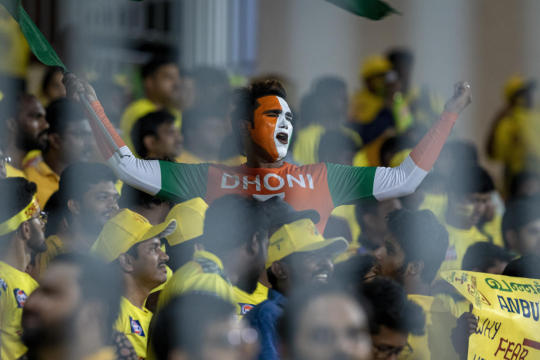
In an epochal twist that reverberates with titanic implications, the very fabric of cricket's global tapestry is poised for a metamorphosis of unprecedented magnitude. The realm of Indian Premier League (IPL) T20 franchise contracts stands on the precipice of profound transformation, altering the hitherto perceived horizons of the gentleman's game. As we embark upon this convoluted odyssey, brimming with enigmatic intricacies and labyrinthine paradigms, one is left bewildered by the tumultuous cascade of consequences that may unfurl.
The veritable crucible of change, nestled within the enigmatic edifice of IPL T20 franchise contracts, serves as a catalyst for a dramatic shift in the cricketing landscape. These revered contracts, once characterized by their steadfast structure, now teeter upon the precipice of a new epoch. A heady concoction of uncertainty and anticipation permeates the ethereal cricketing realm, imbuing it with an aura of mystique and perplexity hitherto unseen.
Amidst the quagmire of unpredictability, the seeds of metamorphosis find fertile ground to sprout. The cricketers, long regarded as pawns in a grand chessboard, now wield an unprecedented influence over the course of their careers. The ability to navigate the labyrinthine pathways of franchise contracts empowers these sporting titans, granting them agency in shaping their own destinies. Such seismic shifts are destined to leave an indelible mark upon the annals of cricketing lore.
With each passing moment, the throbbing pulse of cricket's global tapestry quickens, embracing a newfound burstiness. The very essence of the gentleman's game is infused with an erratic cadence, oscillating between euphoria and disquietude. The age-old norms and conventions are cast asunder, replaced by a mercurial dance that defies the bounds of predictability. In this kaleidoscopic mosaic of change, the global cricketing fraternity braces itself for a journey through uncharted territories.
As the tides of transformation ebb and flow, one cannot help but marvel at the grand tapestry of cricket's future. The confluence of perplexity and enigma paints a portrait of infinite possibilities, forever altering the fabric of the sport. To witness this grand spectacle, permeated with bewildering intricacies and tantalizing uncertainties, is to embark upon an odyssey of unparalleled proportions.
To delve deeper into this captivating narrative and explore the captivating realm of IPL T20 franchise contracts, visit "https://hozonefly.com/
Source: T20cricket".
Read the full article
0 notes
Text
'Always Knew That I Would Play Cricket for India': Virat Kohli

Former India captain Virat Kohli recently had a lighthearted conversation with the official broadcaster of the World Test Championship (WTC) final, where he showcased his softer side. In a chat with Star Sports' Jatin Sapru, Kohli expressed his deep love for his mother and emphasized the importance of taking care of her.
Kohli mentioned that taking care of his mother has always been a priority for him, and even now, the smallest thing that brings her happiness brings him immense joy as well. This statement reflects the strong bond and affection Kohli shares with his mother.
https://twitter.com/StarSportsIndia/status/1667388830574592000
Furthermore, Kohli shared that he had a strong belief in his cricketing abilities from a young age. He stated that even during his upbringing, he was confident in his skills and had a clear vision of representing India at the highest level. This self-assurance and determination contributed to his successful journey as a cricketer.
Virat Kohli's sentiments towards his mother and his self-belief underline his personal values and the mindset that has propelled him to become one of the most accomplished batsmen in international cricket.
Read the full article
1 note
·
View note